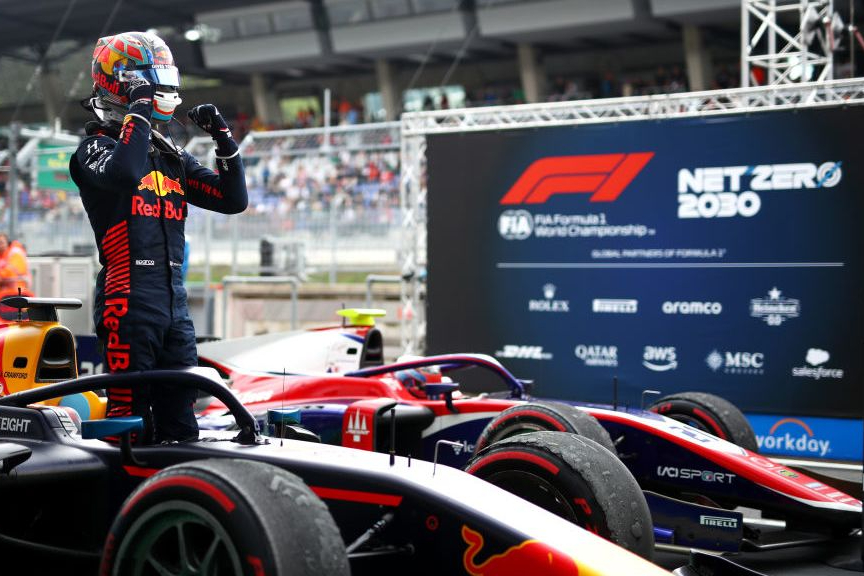
Photo: Formula Motorsport Ltd
Formula 2 and the FIA Formula 3 Championship introduced a 55% sustainable fuel mix this year, with supplier Aramco using biofuel in their product.
The original plan was for F2 to adopt such fuels next year when its next generation engine is introduced, but the fuel switch got moved forward to 2023. F2 defined the ‘sustainable’ component of the fuel as being: “Either a second generation bio component or a component produced from non-bio carbon capture and synthetic process.
“For the purposes of quantification, the advanced sustainable component contribution of a given molecule is defined as the carbon, hydrogen and oxygen atoms from an advanced sustainable origin as a percent of the total molecule, on a mass/mass basis.”
When the announcement for 2023 was made, the series intended for direct air capture (DAC) to be used for the sourcing of their fuel. Practical concerns were raised about if enough fuel could actually be created using the technique, which Aramco described as “quite a difficult one” and therefore not suitable yet for supplying a 100% sustainable mix product.
While pulling carbon dioxide straight out of the air has huge potential as an air-cleaning technique and also as a method for carbon storage, it has to be done on an immense scale for that CO2 to then be used for industrial scale synthetic fuel production.
F2 later updated its plans to use biofuels this year, with the ‘55%’ figure to then come from DAC rather than biofuel by 2025, and with a 100% sustainable synthetic fuel mix by 2027.
Formula Scout recently asked teams if they have had to change their working methods in any way to use the new fuel.
“This is more a question, I guess, to our engine supplier,” said Campos Racing team principal Adrian Campos Jr.
“We just do what they tell us to do. And I know there have been some changes made on the cars for this, but nothing special that we could do from our side.”
Hitech GP’s team principal Oliver Oakes followed up by saying: “We’re quite lucky that Didier Perrin [F2’s technical director] sort of does most of the heavy lifting with Mechachrome on the side of the engine to run on that fuel. I think for us as teams, actually, the only thing you notice is when you do take a look in the fuel cells, the fuel smells different and that type of thing. But actually it’s all pretty normal. Which is a credit to those guys who have been developing it.”
Van Amersfoort Racing boss Frits van Amersfoort noted “as a team, you don’t really see any difference”.
“They changed the mapping of the engines a bit, I think. They didn’t tell much about it. It looks funny, it more looks like diesel then it looks like fuel. For me, it’s really important that motor racing contributes to the green [philosophy], and we shouldn’t leave it. I think it’s quite a good step to go this way,” he said. “And the greener it gets, the better it is for everybody.”